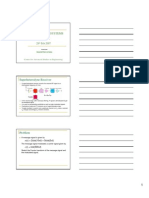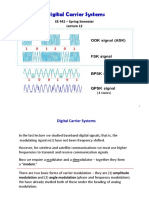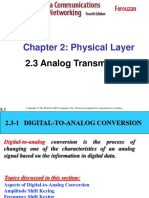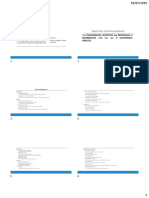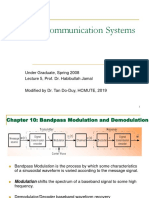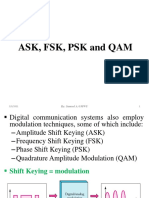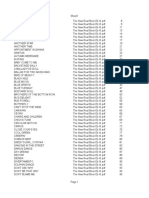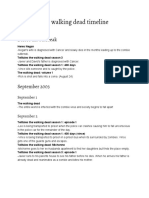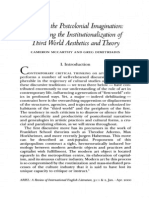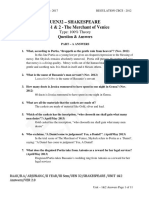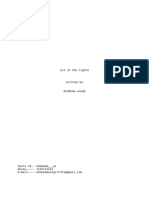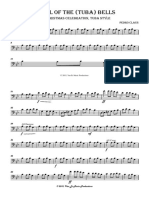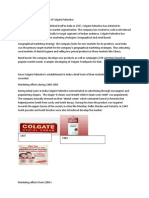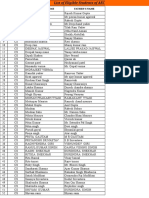0% found this document useful (0 votes)
59 views13 pagesUnit05 Cs Digital Modulation
This document discusses digital modulation schemes. It describes amplitude shift keying (ASK), frequency shift keying (FSK), and phase shift keying (PSK). It notes that digital modulation schemes work similarly to analog modulation schemes by changing properties of the carrier signal like amplitude, frequency, or phase. The document also discusses bit rate vs baud rate, constellation diagrams, and provides examples of constellation diagrams for 4-ASK, 4-PSK, and 8-PSK signals.
Uploaded by
Babar ShaikhCopyright
© © All Rights Reserved
We take content rights seriously. If you suspect this is your content, claim it here.
Available Formats
Download as PDF, TXT or read online on Scribd
0% found this document useful (0 votes)
59 views13 pagesUnit05 Cs Digital Modulation
This document discusses digital modulation schemes. It describes amplitude shift keying (ASK), frequency shift keying (FSK), and phase shift keying (PSK). It notes that digital modulation schemes work similarly to analog modulation schemes by changing properties of the carrier signal like amplitude, frequency, or phase. The document also discusses bit rate vs baud rate, constellation diagrams, and provides examples of constellation diagrams for 4-ASK, 4-PSK, and 8-PSK signals.
Uploaded by
Babar ShaikhCopyright
© © All Rights Reserved
We take content rights seriously. If you suspect this is your content, claim it here.
Available Formats
Download as PDF, TXT or read online on Scribd
/ 13




















